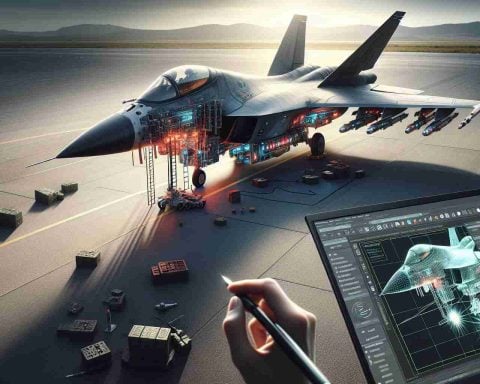The quest for speed in aviation has always been a point of fascination among engineers and enthusiasts. Two iconic aircraft that symbolize the pinnacle of speed technology during the Cold War are the XB-70 Valkyrie and the SR-71 Blackbird. Although they were designed for different roles and had distinct technological advancements, comparisons regarding their speed capabilities often arise. The question remains: is the XB-70 faster than the SR-71?
The XB-70 Valkyrie was developed in the late 1950s by North American Aviation as a strategic bomber intended to fly at high altitudes and supersonic speeds. With its radical design featuring a unique delta wing configuration, the XB-70 was capable of achieving speeds up to Mach 3.1, which is approximately 2,000 miles per hour (3,219 kilometers per hour) at cruising altitude. This remarkable speed was attributed to its powerful engines and innovative aerodynamic design that allowed it to slice through the atmosphere with minimal drag.
On the other hand, the SR-71 Blackbird emerged from a different set of requirements — primarily as a high-speed reconnaissance aircraft. Designed by Lockheed’s Skunk Works division, the SR-71 was built with the primary objective of flying at high speeds while gathering intelligence over hostile territories. The aircraft reached an impressive operational speed of around Mach 3.2, or roughly 2,193 miles per hour (3,529 kilometers per hour), making it one of the fastest air-breathing manned aircraft in history. This incredible performance was made possible by its advanced engine technology, which allowed the aircraft to function effectively at extreme altitudes.
When directly comparing maximum speeds, we find that the SR-71 marginally exceeds the XB-70 in terms of raw performance. However, it is essential to consider the different design philosophies and intended operational roles. The XB-70 was intended for high-altitude strategic bombing missions, while the SR-71 was built primarily for reconnaissance and evasion. The speed of both aircraft provided them with unique advantages in their respective missions; the XB-70 was designed to outrun enemy surface-to-air missiles, and the SR-71 could quickly evade interception due to its speed and altitude.
In addition to speed, other factors come into play when evaluating these aircraft. The range and altitude capabilities of the SR-71 also contributed to its effectiveness. The aircraft could operate at altitudes exceeding 85,000 feet, which allowed it to fly above most conventional threats, a feat that the XB-70 could also achieve but did not regularly reach operationally.
In conclusion, while the XB-70 Valkyrie was designed for impressive speeds up to Mach 3.1, the SR-71 Blackbird outperformed it with operational capabilities reaching approximately Mach 3.2. Both aircraft have left an indelible mark on aviation history, representing cutting-edge technology of their time. Each served its purpose well — the XB-70 as a revolutionary bomber and the SR-71 as a master of reconnaissance. Thus, the answer to whether the XB-70 is faster than the SR-71 lies in context; in terms of top speed, the SR-71 Blackbird takes the title.
Enhancing Your Aviation Knowledge: Tips, Life Hacks, and Interesting Facts
Aviation history is a captivating field that not only shows the technological advancements of our time but also opens a window to understanding the dynamics of speed, design, and engineering feats. Here are some tips, life hacks, and interesting facts to help you dive deeper into the world of aviation, particularly regarding iconic aircraft like the XB-70 Valkyrie and the SR-71 Blackbird.
1. Understanding Supersonic Flight:
To appreciate the speeds of aircraft like the XB-70 and SR-71, familiarize yourself with the concept of supersonic flight. This is when an aircraft travels faster than the speed of sound, which is approximately 761 mph (1,225 km/h) at sea level. Understanding the basics of aerodynamics can give you insight into how these machines were engineered for exceptional performance.
2. Explore Aviation Museums:
If you are fascinated by aircraft, make a point to visit aviation museums. Many museums have artifacts and even full aircraft on display, such as the SR-71 Blackbird. This firsthand experience can deepen your understanding and appreciation of aviation technology. A great place to start is the Smithsonian National Air and Space Museum, which features an extensive collection of aircraft.
3. Airlines’ Technological Advances:
Follow current trends and innovations in commercial aviation. Many technologies that emerged from military aircraft projects, such as stealth technology and advanced aerodynamics, are now influencing commercial aviation designs. Stay updated through reliable aviation news platforms like Flight Global.
4. Track Speed Records:
Keeping an eye on speed records in aviation can be an exciting hobby. The fastest aircraft keep changing as new designs are tested. Websites like Airliners.net often provide news and details about record-setting flights.
5. Educational Resources:
Consider enrolling in online courses or watching documentaries focused on aviation history and technology. Websites like Coursera offer courses related to aerospace engineering and aviation history.
6. Model Building:
Engage in model building or flight simulation. This hands-on activity can help you understand the craftsmanship behind the design of aircraft such as the XB-70 and SR-71. Companies like Tamiya provide kits that can help you build detailed replicas.
7. Trivia and Fun Facts:
Here are a few trivia questions to test your knowledge:
– Which aircraft holds the top speed record for manned aircraft?
– How did the design of the SR-71 help reduce radar visibility?
Learning these facts can help keep your conversations about aviation lively and engaging.
These tips and insights can both enhance your understanding of aviation and enrich your discussions about the remarkable technological achievements of aircraft like the XB-70 Valkyrie and SR-71 Blackbird. Whether you’re a casual enthusiast or a dedicated aviator, there’s always something new to learn and explore in this fascinating field.
The article has been updated: 2024-10-31 02:00
Here are some suggested related links for the post title “Is The XB-70 Faster Than The SR-71?”:
1. U.S. Air Force – Official website of the U.S. Air Force, which provides information on various aircraft, including the XB-70 and SR-71.
2. NASA – The National Aeronautics and Space Administration offers insights into aerospace technology and research, including historical aircraft.
3. Lockheed Martin – The primary contractor for the SR-71, Lockheed Martin provides information on their advanced aerospace technologies.
4. Military.com – A comprehensive resource for military news and information, including aircraft specifications and comparisons.
5. FlightGlobal – An aviation news source that covers historical and current aircraft developments, with articles regarding both the XB-70 and SR-71.
6. Air & Space Magazine – A magazine dedicated to aviation history and technology, covering iconic aircraft like the XB-70 and SR-71.
7. Historic Aircraft – A site that focuses on significant aircraft in history, providing details about the XB-70 and SR-71.
8. Military History Now – An online publication that explores military history and aviation advancements, often discussing notable aircraft comparisons.
These links provide additional context and information related to the performance and history of the XB-70 and SR-71.
The article has been updated: 2024-11-01 21:18
Is The XB-70 Faster Than The SR-71?
The XB-70 Valkyrie and the SR-71 Blackbird are two iconic aircraft known for their incredible speeds. The XB-70, a supersonic bomber, holds a maximum speed of approximately Mach 3.1 (around 2,056 mph or 3,333 km/h) at high altitudes. On the other hand, the SR-71, a long-range, advanced strategic reconnaissance aircraft, can reach speeds of about Mach 3.3 (approximately 2,200 mph or 3,540 km/h).
Thus, while both aircraft are exceptionally fast, the SR-71 is slightly faster than the XB-70, making it one of the fastest air-breathing manned aircraft ever built.



















